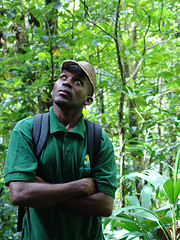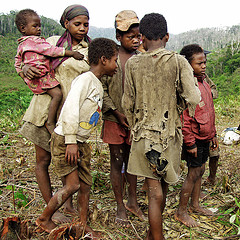|
PUBLICATIONS

Carbon markets and forest conservation: A review of the environmental benefits of REDD mechanisms
UNEP-WCMC has undertaken a review of existing and planned measures to promote environmental co-benefits from REDD.
It considers the options for how these measures might be developed in the future. This report is available
here.
Promoting biodiversity co-benefits in REDD
This recent OECD report examines how biodiversity co-benefits in REDD can be enhanced, both at the design and implementation level.
It discusses potential biodiversity implications of different REDD design options that have been put forward in the international
climate change negotiations and proceeds by examining how the creation of additional biodiversity-specific incentives could be used
to complement a REDD mechanism, so as to target biodiversity benefits directly. More:
www.oecd.org/env/biodiversity
Compilation of readiness activities prepared on behalf of the Forum on Readiness for REDD
Supported by the Norwegian Agency for Development Cooperation, the Woods Hole Research Center (WHRC) has prepared "An Overview of Readiness for REDD:
A compilation of readiness activities prepared on behalf of the Forum on Readiness for REDD". This document provides useful information on various
REDD initiatives underway around the world, serving as an up-to-date register of on-going activities in a number of countries.
The document allows interested stakeholders to get a snapshot of readiness activities taking place both globally and in their country or region,
as a way to highlight potential gaps and synergies and encourage collaboration and partnerships in all facets of readiness efforts.
This report is available here.

REDD Realities: How strategies to reduce emissions from deforestation and forest degradation could impact on biodiversity and
Indigenous Peoples in developing countries
REDD currently dominates the debate about forests and climate change. It is presented as a win-win situation; climate, forests, and people would all gain.
But how does a theoretical success work out on the ground? In places where legislation on biodiversity is weak? Where safeguards to protect the rights of
Indigenous Peoples do hardly exist? The new report 'REDD Realities' explores this question. Nine member organizations of the Global Forest Coalition examined
REDD strategies and activities in their countries.
To download the report:
English,
French, or
Spanish.
For more information about the Global Forest Coalition and its activities, visit: http://www.globalforestcoalition.org.
Opportunities for achieving biodiversity conservation through REDD
A recent paper in Conservation Letters explores how the design and implementation of REDD will impact biodiversity conservation, and highlights
opportunities for achieving biodiversity conservation through REDD. The authors highlight that the most important immediate step is to ensure
that REDD maximizes the area of tropical forest conserved. However, it may also be possible to include guidelines or incentives within a REDD
framework or in national implementation to channel funding to areas of high biodiversity.
For more information, see:
http://www3.interscience.wiley.com/journal/122688053/abstract.
"The End of the Hinterland: Forests, Conflict and Climate Change"
Without clear rules to address land tenure and forests rights issues, REDD could increase conflict by boosting the perceived value of forest land,
cautions a recent report by the Washington-based Rights and Resources Initiative (RRI). The report warns that this could jeopardize the effectiveness
of REDD and put forest-dependent communities at risk of exploitation. The report is available
here.
|





